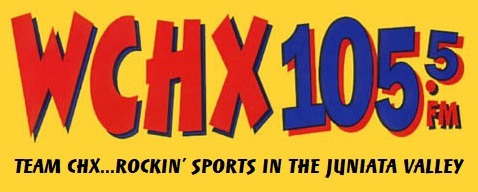Trent Hidlay, the Lewistown product, rallied from a 10–2 deficit to beat Amanula Gadzhimagomedov and capture the 92kg World Championship in Zagreb, turning a match that looked like a textbook lesson in Russian control into a clinic on adjustment, conditioning and competitive will.

If you follow international freestyle, you know the scripts: a Dagestani-style chest wrap, an early burst of offense, and the scoreboard tilting before an American can get comfortable. That’s exactly how the first period unfolded. Gadzhimagomedov, hips low and hands tight, landed the kind of chest-wrap sequences that come from generations of drilling and pressure-testing under grueling practice schedules. By the break the Russian led 10–2 and the crowd — and the math — expected the match to close like so many others: control, finish, silver for the American.

Wrestling, though, is a sport that rewards corrections as much as raw power. Hidlay’s turnaround began with a tactical reset. He stopped hunting the big double and the high crotch that had defined earlier phases of his career and returned to the grips and angles that made him a nightmare in high school and the NCAA — the underhook, the sweep single, the chain of motion that pulls an opponent off his balance and forces him to react. That adjustment wasn’t aesthetic. It was a strategic insistence on movement and leverage at a weight class where being static is a slow route to defeat.

The second period opened with that shift. A sweep single, followed by a well-timed double, then a turn for exposure — each sequence was textbook wrestling: remove the base, create the angle, finish. Slowly the scoreboard told a different story. Ten-four. Ten-six. Then, after a roll for four, Hidlay had the lead: 13–10. What had been a rout became a scramble, and that scramble exposed a crucial edge — Hidlay’s conditioning and his capacity to keep pressure on after conceding early points.

Coach and corner matter in world finals, and so does a wrestler’s mental mechanism. Hidlay admitted after the match that, in the darkest moments, he prayed for one more chance. “It was chaotic, man… I said, ‘Give me one more chance. Please give me one more life, and I’ll figure a way out,’” he told reporters. That prayer, if you want to call it that, wasn’t spiritual theatre; it was a compact with effort. He clawed, he tied grips, he forced positional scrambles where the Russian’s early speed and static control were less decisive.

Technically, the match underlined a trend in modern international freestyle: the value of chain wrestling and positional creativity at higher weights. Opponents who rely on a heavy chest wrap and single-move dominance can be eroded when an adversary forces them into transitions, into exposure attempts, into scrambling that saps oxygen and confidence. Hidlay didn’t invent that idea; he executed it under the most intense pressure available in our sport.

And there’s the human side. For Lewistown, this is more than a medal. It’s a proof point for a community that raises wrestlers the old way: long practices, travel meets, parents who drive late at night. It’s the result of coaches who prep kids not just for high school dominance but for the grinding ladder of junior, U23 and senior international competition. When the national anthem played and Hidlay stood with the gold around his neck, it wasn’t just his victory — it was the payoff for years of small, invisible work.

On a continental level, this win matters for Team USA. Beating a top Russian in a world final at 92kg does two things: it removes a psychological edge the Russian program holds in upper weights, and it offers a tactical template. Other American wrestlers and coaches will watch film and see how underhooking, movement and selective chaining of attacks can flip matches that begin poorly. That’s the kind of practical lesson that travels.
The final thirty seconds were classic Hidlay: hands low, eyes searching, not playing for comfort but for position. Those closing moments revealed his maturity — the ability to read a clock and a man, to force a pace that benefits his own gas tank and undermines the opponent’s. He scored eleven straight points in the turnaround; that kind of run is an indictment of relentlessness.
Back in Lewistown the reaction will be immediate — texts, phone calls, small celebrations that mean the world to people who watched him grow through youth wrestling tournaments and high school seasons. Kids who pin their singlets up on the wall will have a new picture in their heads: a hometown kid who fell behind and refused to let the scoreboard tell the story.
In the end, Hidlay’s Zagreb win is an argument for wrestling’s stubborn truth: you can be outgunned early, but with the right adjustments, conditioning and a refusal to quit, a match — and a life — can change. That’s the lesson coaches will teach and kids will remember. It’s the kind of result that keeps the sport honest and keeps spectators leaning in.
Trent Hidlay left Croatia with a gold medal and everyone who knows the sport left with a fresh reminder: in freestyle, as in life, the match is seldom over until you accept it is.


